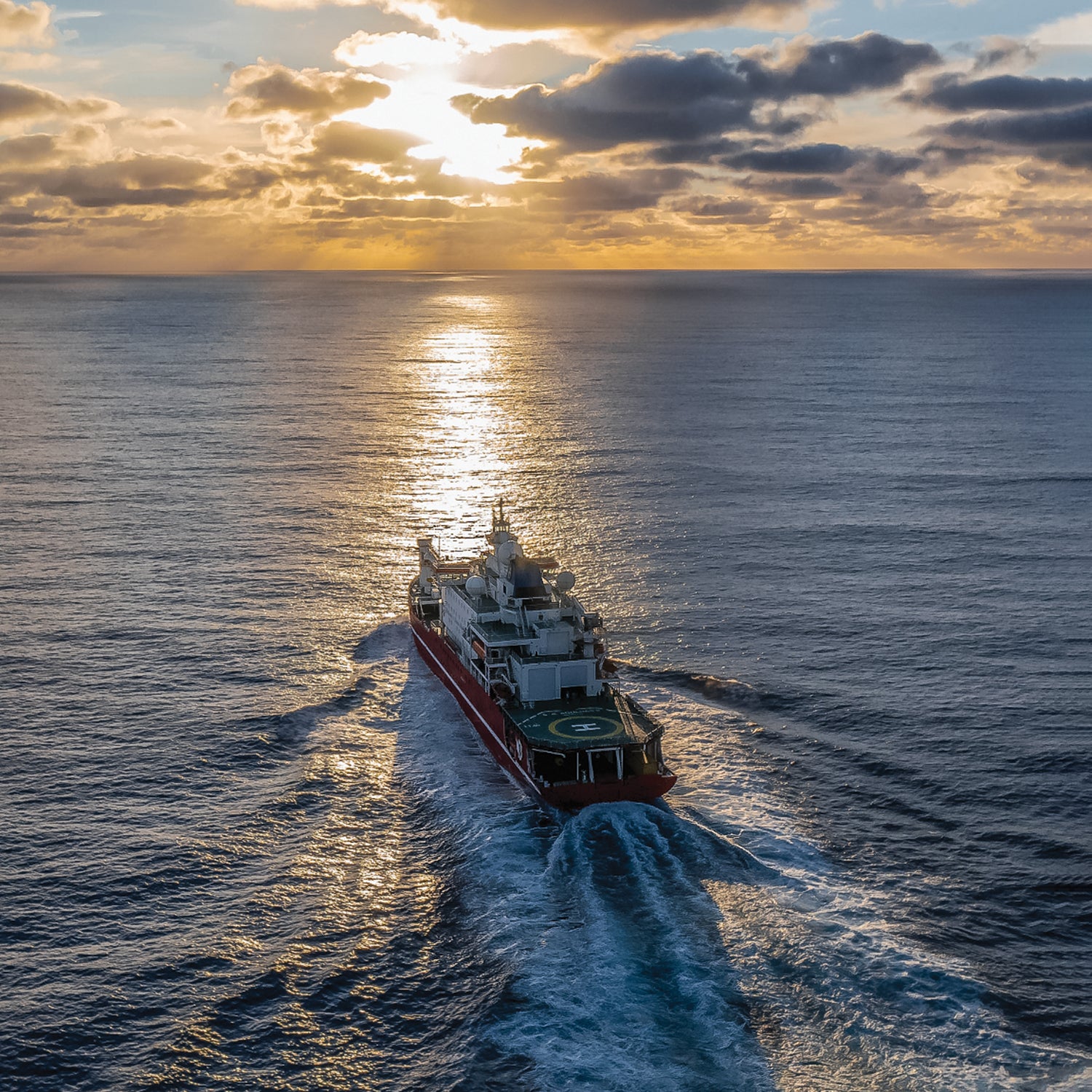In January 1915, polar explorer Ernest Shackleton’s ship Endurance became icebound in the Antarctic. What happened next would become legend: Shackleton and his crew watched the vessel slowly sink, survived a year and a half stranded on the ice, and eventually self-rescued with an 800-mile journey in an open lifeboat. Every member of the 28-man team survived.
Now, 106 years later, the wreck has been found—and in remarkable condition—at a depth of nearly 10,000 feet in the Weddell Sea. A team from the Falklands Maritime Heritage Trust led by polar geographer John Shears located the ship with an autonomous underwater vehicle on March 5, after a month at sea.
The mission to find the Endurance was a far cry from Shackleton’s voyage on the 144-foot schooner. A 63-member expedition team joined a marine crew of 45 aboard the S. A. Agulhas II, a South African icebreaker and polar-research vessel outfitted with two helicopters, the materials necessary to install an ice camp, and two autonomous underwater vehicles (AUVs) able to hunt for the wreck. The team represented an astonishing level of expertise across numerous fields: engineering, geophysics, medical science, statistics, polar expedition, oceanography, and beyond.
In 2019, a crew comprising many of the same individuals set out in an icebreaker equipped with an AUV to scan the seafloor, but lost the device in drifting ice.
“The Weddell Sea is probably the most difficult ocean to travel on worldwide,” says Lasse Rabenstein, a geophysicist and the chief scientist overseeing the sea-ice team.
Subsea manager Nico Vincent said that operating an AUV under these conditions is extremely challenging, requiring high-tech equipment and a strong, experienced group. “To [navigate] under drifting ice is harder than landing on the moon in 1969,” he says.
For many team members, this was a mission unlike any they’d experienced before. “Either we’d succeed completely by finding the wreck or we’d fail,” says Rabenstein. “Usually when you do scientific operations, there’s a goal, but it’s more open-ended.”
The expedition would have been fruitful even if they’d failed to locate the ship. “The search for the Endurance was the primary task,” Vincent says. “But secondary objectives were achieved, too: ice science, weather forecasting, marine-engineering research, education for kids, and media support.”
While searching for the vessel, Rabenstein’s team took sea-ice samples and better grasped how to navigate a frozen ocean. At a 24-hour ice-information desk, he and his crew made up-to-date satellite images and drift forecasts available for the subsea team, to help pilot through the dark and in whiteout conditions. That data helped Rabenstein with his own research as well. “My company, Drift and Ice, is writing navigation software for research ships in the ice. I learned a lot about what is needed in software to navigate safely,” Rabenstein says.
Meanwhile, engineering scientists used sensors to better understand how a ship reacts to pressure from the ice, to optimize vessels for future expeditions. South African weather-service representatives deployed weather balloons and scanned the water column, sharing data with the research community.
After locating the Endurance, the crew visited Shackleton’s grave in Grytviken, South Georgia, to pay their respects. “Shackleton is more important for me than for the average person,” Rabenstein says. “He never gave up but also did not push it to the limit. All the people he took on his expeditions survived. Other polar explorers were not so successful. He was a real hero.”


